
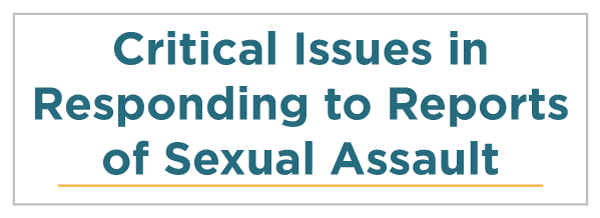 |
 |
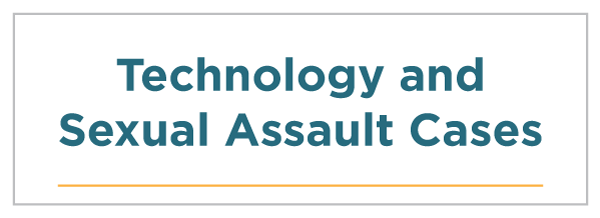 |
 |
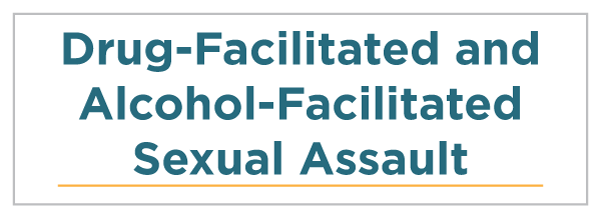 |
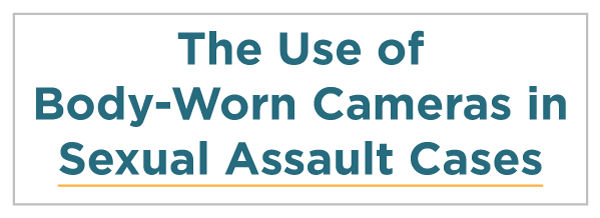 |
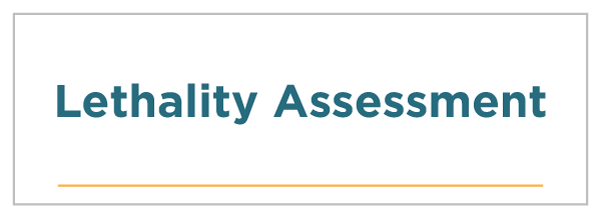 |
 |
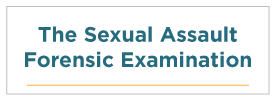 |
 |
 |
 |
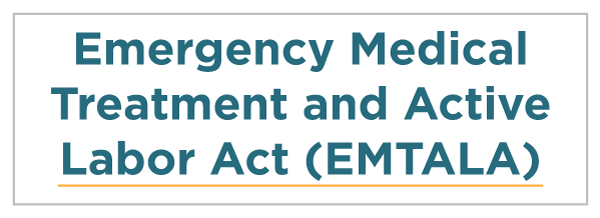 |
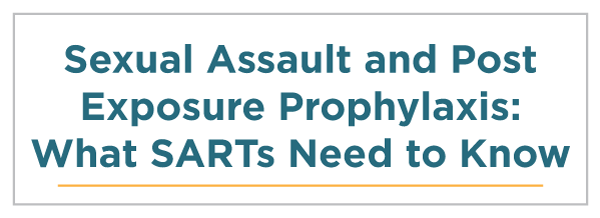 |
 |
Strangulation
When strangulation occurs with sexual assault, there is a significant risk of homicide and health risks for victims, making the inclusion of routine questions about strangulation an important part of SART response protocols. Despite the high fatality risk of strangulation, it is often misidentified, and it is important that anyone responding to victims of sexual assault be trained to screen for strangulation and provide an appropriate response.
The combination of strangulation and intimate partner sexual violence (IPSV) may prompt providers to conduct a lethality assessment with a particular victim. Strangulation is used to control a victim and is a reminder that the offender can kill.
Strangulation is a type of asphyxia (lack of oxygen) caused by external pressure or blunt force to the neck, causing blood vessels and air passages to close. Strangulation can be caused by grabbing, suppression, squeezing, or crushing of the throat. [91] Strangulation, or external force on the neck, is often confused with choking, which is an internal obstruction or constriction to an airway.
A person who is strangled can lose consciousness in fewer than 10 seconds. [92] Death can occur within seconds or up to four to five minutes depending on what arteries or veins are involved. [93]
Read on for more information covered in the SART Toolkit:
- Strangulation in SART Protocols
- Training for SART Members
- Strangulation Resources
For information on lethality assessments, consult the Lethality Assessment section of the SART Toolkit
Strangulation in SART Protocols
“When states fail to recognize strangulation as a precursor to domestic homicide, the results can be fatal.” [94]
Appropriate screening, documentation, and treatment of strangulation are essential steps in responding to a sexual assault due to the significant short- and long-term health risks. These steps can lead to appropriate criminal charges and prosecution of offenders in states where strangulation is a distinct crime.
Strangulation in and of itself is treated as a felony in 38 states, but SARTs should research the specific laws on strangulation in your own jurisdiction. A list of state statutes related to strangulation (updated November 2014) is available for download at the National District Attorney’s Association.
In many places, SARTs lead or get involved in advocating for legislation change related to strangulation. For example, the Salt Lake County SART in Utah was instrumental in changing strangulation to a felony level offence in 2017. Strangulation is also an indication of a homicide risk. [95] It is essential that SART members understand the importance of appropriate intervention.
Protocols should include information for each discipline:
- Screening questions to assist first responders, including 911 call takers, to identify when a victim has been strangled. Victims may not report being strangled unless specifically asked about it. [96]
- Prompts to use both the word “strangle” and “choke” when asking about strangulation.
- Coordinated responses to a person who has been strangled to provide immediate and follow-up medical care.
- Appropriate, strangulation-specific documentation for medical professionals related to the medical care of the patient and for law enforcement related to the investigation of the crime.
- Risk and danger assessment questions with specialized responses for high-risk cases with clear indication of who ought to use them.
- Clear identification of the ongoing responsibility of multiple service providers to ask about strangulation at different times after an assault, as the victim may not recall being strangled due to a trauma response.
- Screening questions to ask after the initial contact about strangulation or other forms of violence that occurred but were not immediately recalled by the victim.
- Victim resources to empower victims to track symptoms, regardless of whether they choose to seek medical care.
- Follow-up contacts to all victims as signs of abuse or violence, including strangulation, may not appear for several days.
Protocols should emphasize the increased risk of homicide for victims of domestic violence as well as the medical risks for pregnant women. [97]
Strangulation response should be reviewed whenever the SART protocol is updated.
Training for SART Members
Training on strangulation for all SART members who interact with victims is critical to ensure a comprehensive strangulation response. Important topics include information on strangulation symptoms and risks, how to effectively screen victims, and the importance of prompt medical evaluation. SARTs should be trained in trauma-informed conversations with victims specific to strangulation, how strangulation-related trauma might present, and trauma-informed interview techniques.
Strangulation Resources
Strangulation Resources for Medical Professionals
The Evaluation and Treatment of Non-Fatal Strangulation in the Health Care Setting (PDF, 5 pages)
This paper supports universal screening with detailed medical-forensic assessment of patients who have experienced strangulation. It also includes recommendations for training first responders and emergency department providers in screening, assessment, documentation, intervention, and follow-up services for strangulation victims.
Facts Victims of Strangulation (Choking) Need to Know Brochure (PDF, 1 page)
This brochure, by Alliance for Hope International, available in both English and Spanish, includes signs and symptoms of strangulation.
A Model Protocol for Response to Adult Sexual Assault Cases (PDF, 72 pages)
This protocol by the State of New Hampshire Governor’s Commission on Domestic and Sexual Violence Office of the Attorney General also mentions strangulation in the context of prioritizing patient well-being.
Non-Fatal Strangulation Documentation Toolkit (PDF, 45 pages)
The Non-Fatal Strangulation Documentation Toolkit was developed by the International Association of Forensic Nurses (IAFN) and its Strangulation Taskforce. While health care providers are the intended audience, any first responder will find helpful information to screen for strangulation, short- and long-term health risks, and signs and symptoms, including appropriate documentation and discharge instructions.
State of New Hampshire Office of the Attorney General: Sexual Assault: An Acute Care Protocol for Medical/Forensic Evaluation (PDF, 113 pages)
The section of the protocol, eighth edition (2015), focused on medical/forensic evaluation covers strangulation, including a strangulation tool, recommendations for discharge, and further resources.
Strangulation Assessment Guidelines (Microsoft Word, 3 pages)
These guidelines from the Wisconsin chapter of IAFN help medical personnel assess, care for, and document patients reporting strangulation.
Strangulation Documentation Forms (Microsoft Word, 6 pages)
This sample form from the IAFN Wisconsin chapter includes a strangulation symptom checklist, reporting documents, and discharge instructions.
Strangulation: What We Have Learned (multimedia)
This training DVD by the Training Institute on Strangulation Prevention educates professionals on identifying and responding to strangulation.
Strangulation Resources for Advocates
Responding to Strangulation in Alaska (PDF, 95 pages)
In addition to resources and guidelines for advocates, this resource by the Training Institute on Strangulation Prevention (a program of the National Family Justice Center Alliance) also contains information relevant to law enforcement and health care providers.
Strangulation Resources for Law Enforcement
Response to Non‐Lethal Strangulation Report Review Checklist (PDF, 1 page)
This checklist by the IACP can be used by law enforcement supervisors or first responders to ensure that reports of non-lethal strangulation include all the necessary information.
Training Memo: Law Enforcement Response to Strangulation (PDF, 4 pages)
This resource from the Blueprint for Safety provides symptoms and signs of strangulation to help first responders recognize it, as well as interview questions officers can ask the victim.
Strangulation Resources for Prosecutors
“And Then He Choked Me”: Understanding, Investigating, and Prosecuting Strangulation Cases (PDF, 4 pages)
This resource from the National Center for the Prosecution of Violence Against Women covers the effects of strangulation, tips on investigations, and information on legislature about strangulation.
The Investigation and Prosecution of Strangulation Cases (PDF, 266 pages)
This document by the Training Institute on Strangulation Prevention and the California District Attorneys Association provides guidance for evidence collection, investigation, and prosecution of strangulation cases.
Prosecuting Strangulation Injury (multimedia, 92:18)
This webinar, presented by Aequitas: The Prosecutors’ Resource on Violence Against Women, covers myths about strangulation, risk factors, and strategies for prosecution.
Strangulation Training Resources
The Evaluation and Treatment of Non-Fatal Strangulation in the Health Care Setting (PDF, 5 pages)
This resource from the IAFN includes recommendations about collaboration, training, and treatment related to strangulation.
7 Facts Every Judge and Attorney Should Know When Domestic Violence Involves Strangulation
This article by the Continuing Education of the Bar at the University of California includes a quick overview of important information related to strangulation.
Media Guide: Choking verses Strangulation (PDF, 3 pages)
This media guide by Jane Done Inc. aims to help reporters, copywriters, headline writers, and editors understand the distinction between the terms “choking” and “strangulation” when describing this act of violence.
Strangulation Assault Training Video (multimedia, 39:59)
This video was developed by the Georgia Commission on Family Violence to enhance training on strangulation for Georgia’s law enforcement and prosecutors. Trigger warning: The video includes footage of simulated strangulation.
Strangulation Technical Assistance Providers
International Association of Forensic Nurses
This membership organization provides information and resources to forensic nurses and those who work with them.
Training Institute on Strangulation Prevention
This organization provides training, technical assistance, online education, a list of experts, and research related to domestic violence and sexual assault strangulation.
Strangulation Statute Resources
Strangulation and Domestic Violence: The Edge of Homicide (PDF, 21 pages)
The Domestic Violence Report’s August/September 2014 issue focused on strangulation provides pertinent articles related to strangulation.
| Back | Index | Next |
